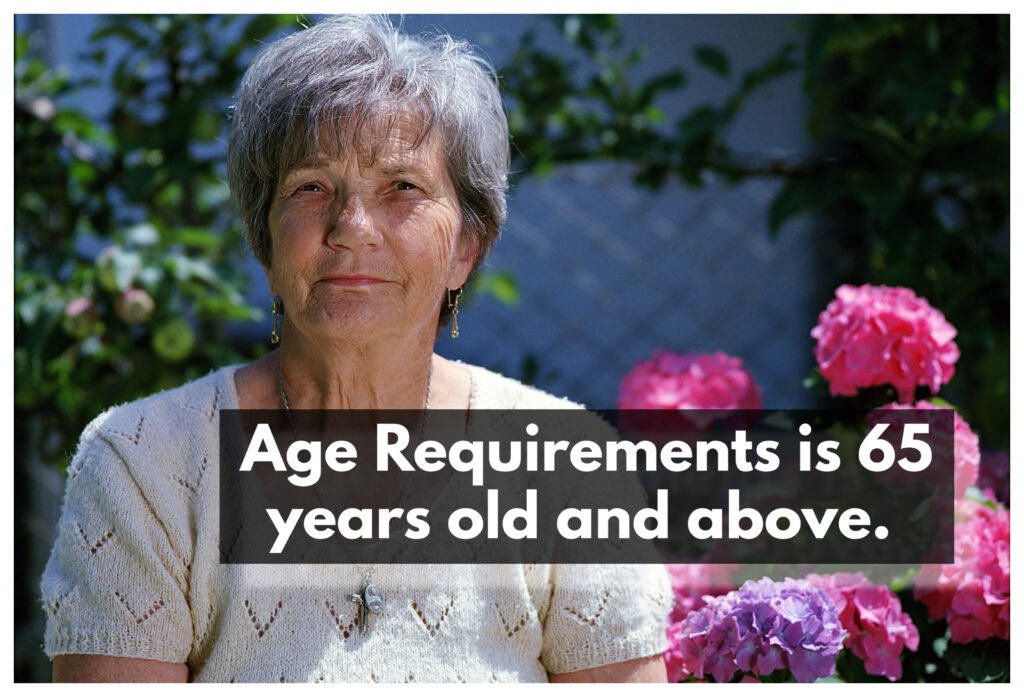As health care costs continue to climb, Medicare remains a vital safety net for millions of seniors and disabled individuals in the United States. Whether you’re turning 65 or facing a disability that qualifies you for early enrollment, understanding the eligibility criteria and application process is key to accessing the benefits you deserve.
Overview of Medicare Eligibility Requirements
In this blog post, we will provide an overview of the eligibility requirements, as well as tips on how to apply.
Age and Disability: When Does Medicare Kick In?
Most Americans become eligible for Medicare when they turn 65. This eligibility kicks in during a defined window—known as the Initial Enrollment Period—which starts three months before your 65th birthday, includes the month you turn 65, and continues for three months after. Enrolling during this period is crucial because it ensures you don’t incur any late enrollment penalties later on.
- Medicare Part A (Hospital Insurance)
- Generally premium-free if you or your spouse have paid Medicare taxes for at least 10 years, Part A covers hospital stays, skilled nursing facilities, hospice care, and some home health services.
- Medicare Part B (Medical Insurance)
- Although Part B requires a monthly premium, it covers outpatient services, preventive care, and doctor visits. Even if you’re still working and have employer health insurance, enrolling in Part A at the appropriate time is recommended, while Part B can sometimes be delayed if you have credible coverage through your employer.
Enrolling on time not only secures your health care coverage but also helps you avoid higher costs down the line.

Prefer to listen rather than read?
Early Enrollment for Those with Disabilities or Specific Conditions
If you’re under 65, you may still qualify for Medicare if you have significant disabilities or certain serious conditions. For example:
- SSDI Beneficiaries
- If you’ve been receiving Social Security Disability Insurance (SSDI) for 24 months, you automatically become eligible for Medicare—even if you’re not yet 65.
- Specific Conditions
- Individuals diagnosed with conditions such as end-stage renal disease (ESRD) or amyotrophic lateral sclerosis (ALS) can qualify for early Medicare. In the case of ALS, Medicare Part A coverage begins immediately upon diagnosis.
- For those with ESRD or other disabilities, eligibility may extend to both Part A and Part B, ensuring comprehensive coverage for conditions that often require ongoing, intensive treatment.
Tip: Think of early Medicare as a fast track designed to meet urgent health needs—if your condition demands frequent, costly care, early enrollment ensures that you get the financial relief and medical coverage you need without delay.
For more detailed information, you can visit Medicare.gov or the Social Security Administration website, which offer up-to-date guidance on enrollment periods and eligibility criteria.
Citizenship, Residency, and Social Security: The Paperwork Puzzle
Medicare eligibility is available only to U.S. citizens and individuals who are legal residents. A valid Social Security Number (SSN) is mandatory for enrolling in Medicare. The Social Security Administration (SSA) issues SSNs, and you can apply for one at a local SSA office or online via the SSA website.

Proof of U.S. Citizenship or Lawful Alien Status
An individual must provide proof of his or her identity and age, as well as proof of U.S. citizenship or lawful alien status. The individual must also provide proof of earnings from employment or self-employment, such as a W-2 or 1099 form, to be eligible for a Social Security Number. Once the application is processed, the Social Security Administration will mail the individual his or her Social Security card.
INS Documentation
In addition to a valid Social Security Number (SSN), individuals may also use other valid forms of U.S. Immigration and Naturalization Service (INS) identification to demonstrate their lawful presence in the United States.
Examples of acceptable INS documentation include a permanent resident card (commonly referred to as a “green card”) or an employment authorization document. Alternatively, individuals may have documentation issued by the Department of Homeland Security (DHS), such as an I-94 Arrival/Departure Record, and an I-766 Employment Authorization Card.
It is important to note that copies of these documents if you are not a U.S. citizen or legal resident, may still qualify if you meet certain Medicare eligibility requirements.
Work History: Earning Your Medicare Credits
A key criterion for receiving premium-free Medicare Part A is having paid Social Security taxes for at least 10 years—or earning a minimum of 40 credits. Typically, you receive one credit for each quarter of work if you meet a specified earnings threshold. For example, in 2020, earning at least $1,410 in a quarter earned you one credit.

Even if you’ve never personally worked for 10 years, you might still qualify for premium-free Part A if your spouse has earned enough credits. Medicare Part B, however, always requires a monthly premium regardless of work history.
How to Apply for Medicare: A Step-by-Step Roadmap
Applying for Medicare coverage is a straightforward process, but it is important to ensure that all of the necessary information and documents are included in the application.
Step 1: Confirm Your Eligibility
Before you apply, double-check that you meet the age, citizenship/residency, and work history requirements.
Step 2: Gather Your Documents
Prepare all necessary documentation:
- Social Security card or proof of your SSN
- Birth certificate or other proof of age
- Legal residency documentation (if applicable)
- Employment records or proof of Social Security tax payments

Step 3: Apply Online or by Mail
Most beneficiaries find it easiest to apply online via the Social Security Administration’s website. If you prefer, you can complete an application by mail. Ensure your application includes all required documents to avoid delays.
Step 4: Follow Up
After submitting your application, expect a review period of about two weeks. You’ll receive a letter confirming your status. If additional documentation is needed, the SSA will contact you. If you haven’t received your Medicare card after two weeks of approval, contact your local SSA office.

Understanding Your Medicare Coverage Options
Medicare isn’t one-size-fits-all—it’s composed of several parts designed to cover different aspects of health care:
Medicare Part A (Hospital Insurance)
- Covers inpatient hospital care, skilled nursing facilities, hospice care, and some home health services.
- If you’ve worked and paid Medicare taxes for at least 10 years, Part A is premium-free. Otherwise, you may purchase it at a monthly premium.
Medicare Part B (Medical Insurance)
- Covers outpatient services, doctor’s visits, and preventive services.
- Requires a monthly premium, with costs potentially higher based on your income.
Medicare Part C (Medicare Advantage)
- An alternative to Original Medicare (Parts A and B) offered by private insurers.
- Often includes extra benefits such as dental, vision, and hearing coverage.
Medicare Part D (Prescription Drug Coverage)
- Helps cover the cost of prescription medications.
- Premiums and costs vary depending on the plan you select.
Clarification: Medicare Supplement (Medigap) policies are separate from Parts C and D—they help cover out-of-pocket costs like copayments and deductibles for Original Medicare.
For detailed cost information and plan comparisons, visit Medicare.gov.

What If Your Application Is Denied? Know Your Rights
Sometimes, despite meeting the eligibility criteria, your Medicare application might be denied or your coverage terminated. Here’s what you can do:
Understand the Denial
- Read the denial or termination letter carefully. It should explain the reasons behind the decision and reference the applicable regulations.
File an Appeal
- You have the right to request a reconsideration. Submit your appeal—complete with any supporting evidence such as medical records or employment documents—within 120 days of the original decision.
- If the initial appeal is unsuccessful, you may have the option to escalate your appeal to an administrative law judge or an appeals council.
For more guidance, check the appeals process details on the Medicare website.
Conclusion
Medicare is more than just a program—it’s a crucial part of planning for your health care needs in retirement. By understanding the eligibility criteria, knowing how to apply, and familiarizing yourself with the different parts of Medicare, you’re well on your way to securing the coverage you need.
Remember, a little preparation today can save you from a lot of hassle tomorrow. Stay informed, ask questions when needed, and make sure to take full advantage of the benefits available to you. If you think this information was helpful, you may also like to read Maximizing Your Retirement Savings Through Intelligent Investing.
FAQ: Medicare Eligibility Requirements
- What is the Initial Enrollment Period (IEP)?
- The IEP spans seven months around your 65th birthday (three months before, the month of, and three months after). Missing this window may result in late enrollment penalties.
- Can I get Medicare if I’m still working?
- Yes! While many choose to delay Part B if they have employer coverage, enrolling in Part A is typically beneficial since it’s premium-free if you’ve worked enough.
- How do I check my eligibility?
- Have your birth date, work history, and legal residency documents ready, then visit the SSA’s official site or call your local SSA office.
Disclaimer
The content provided on MySeniors.World is for informational purposes only and is not intended as either financial or medical advice. Always consult a qualified professional before making any investment or health-related decisions.
Posts may contain affiliate links, meaning we earn a commission – at no additional cost to you, if you click through and make a purchase. Your support helps us continue providing valuable content.



















